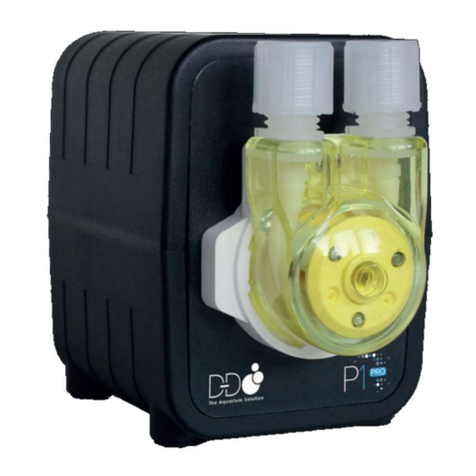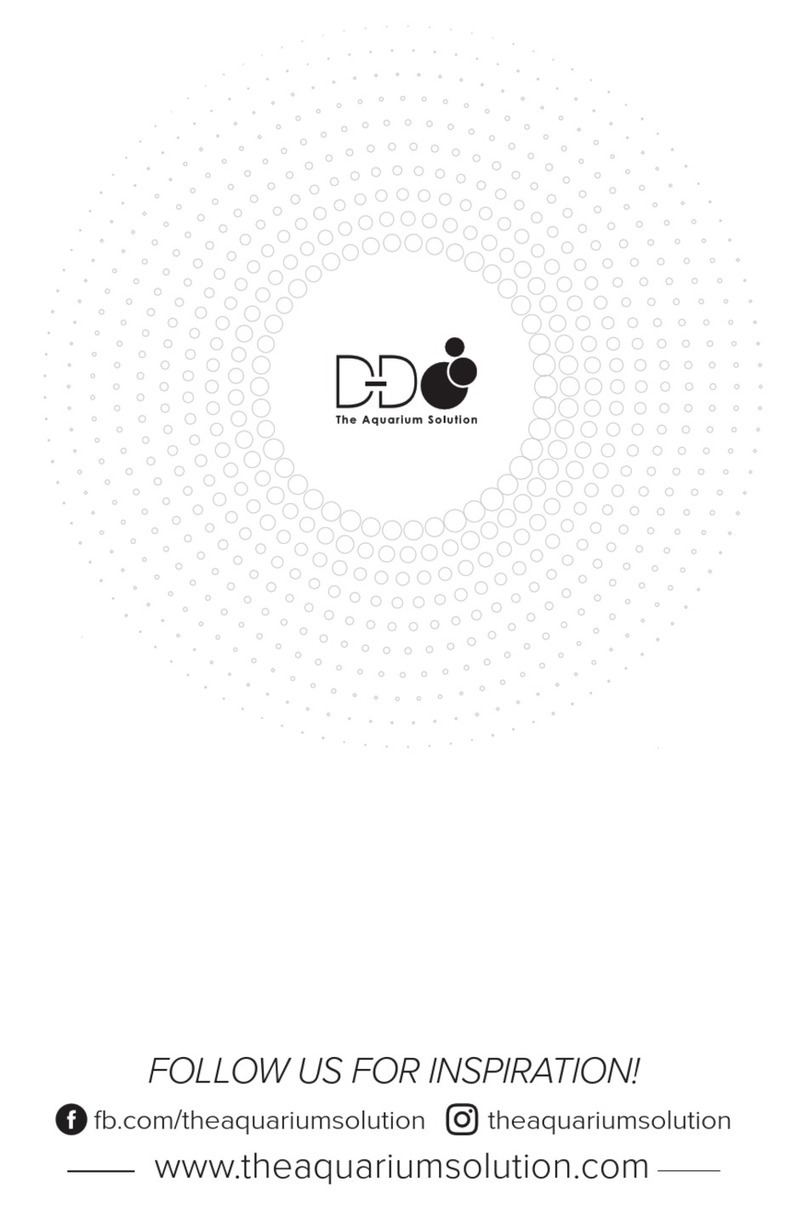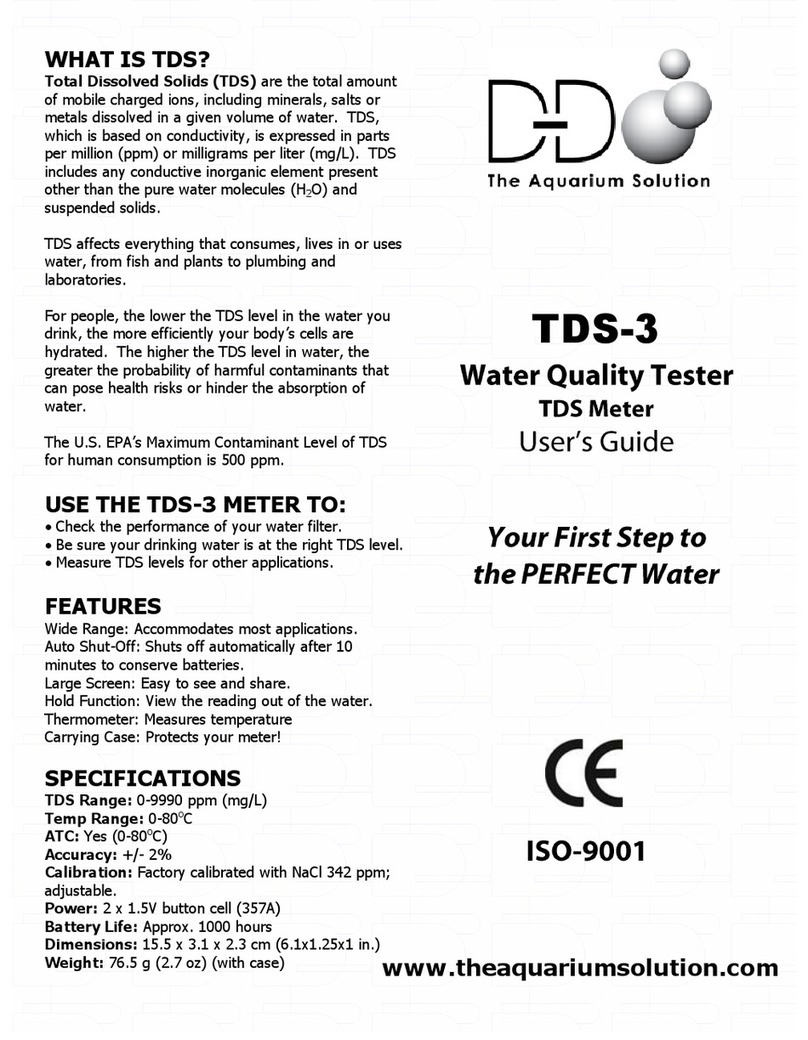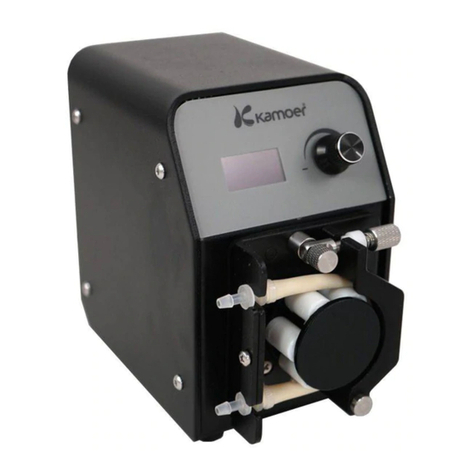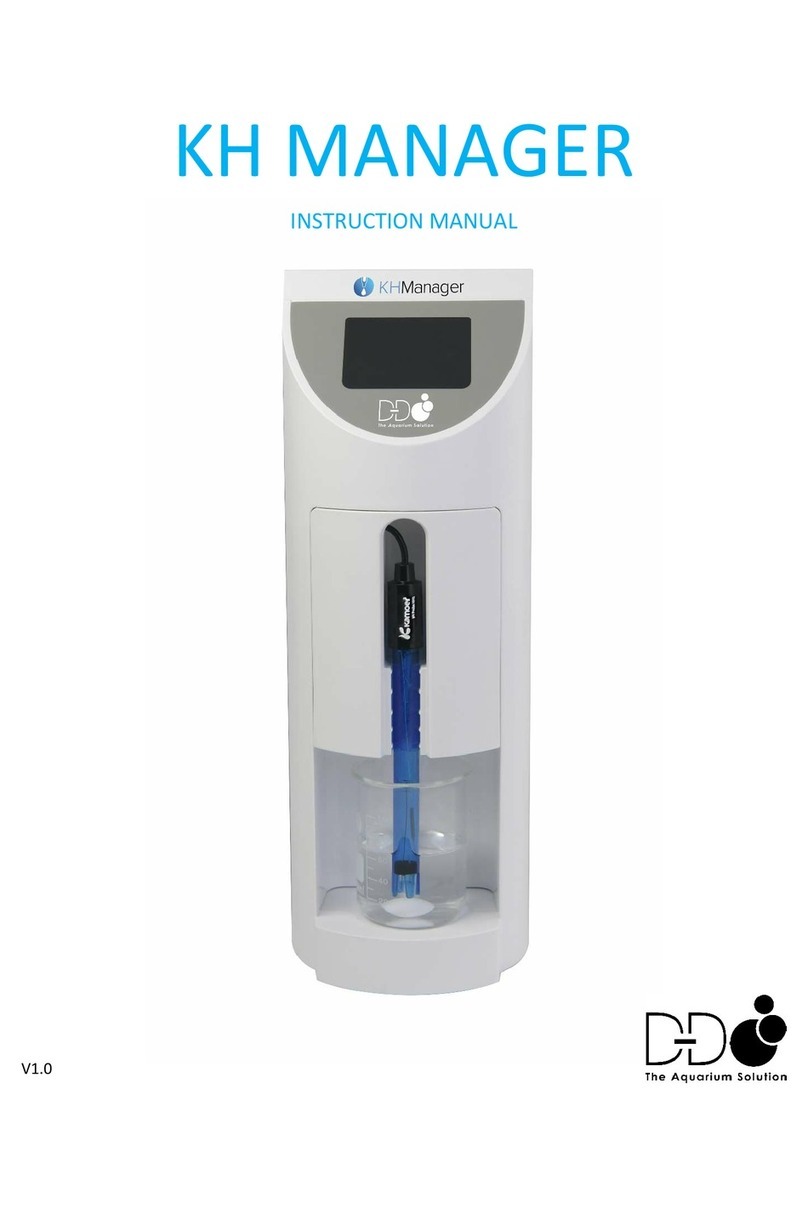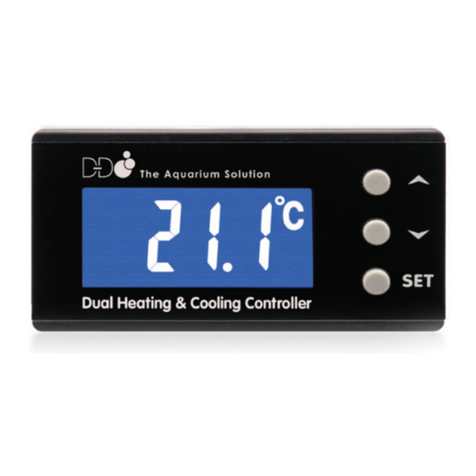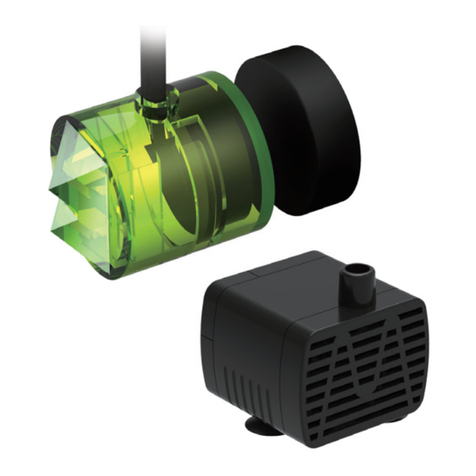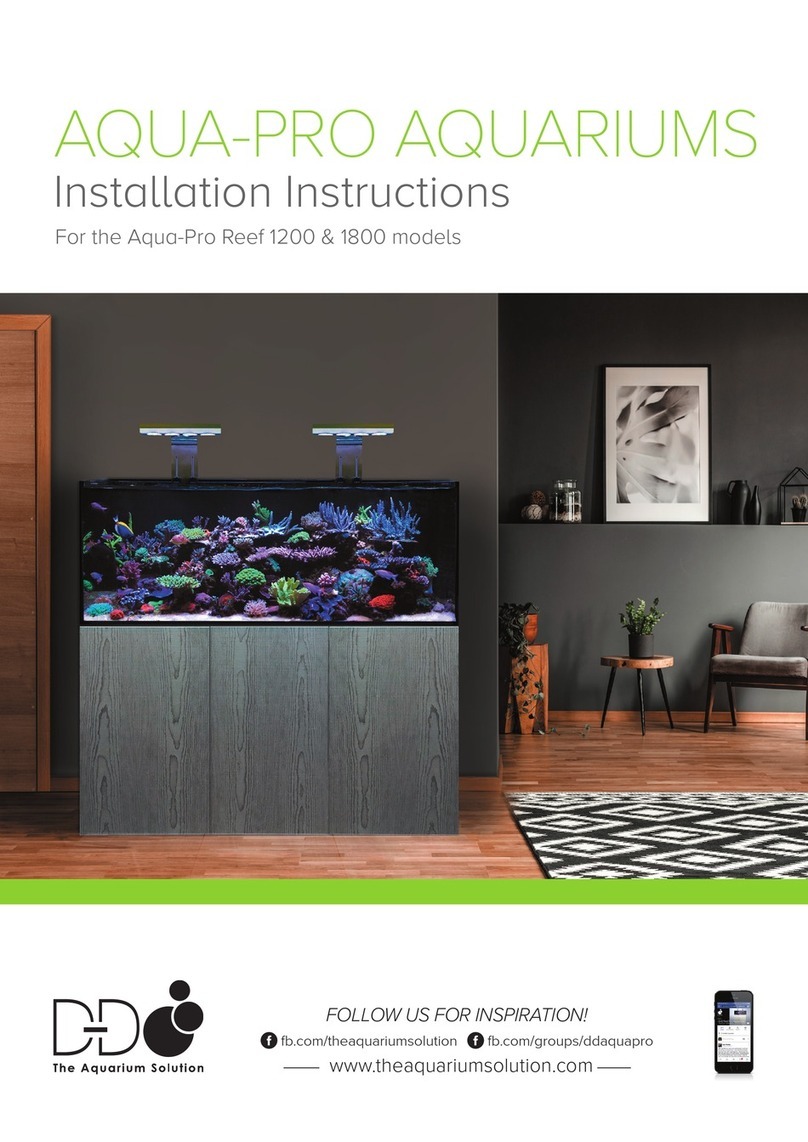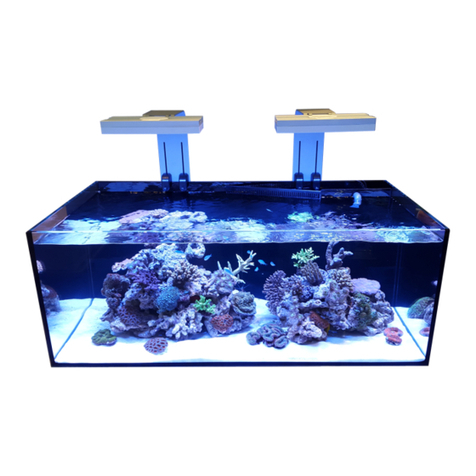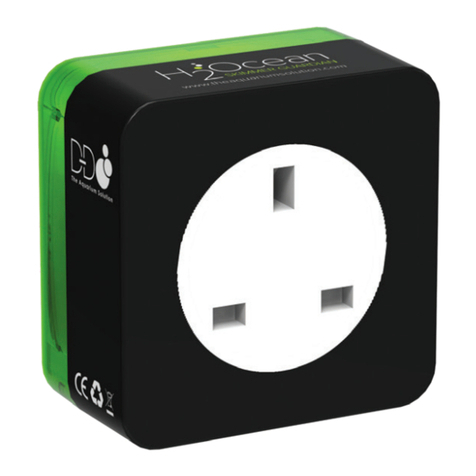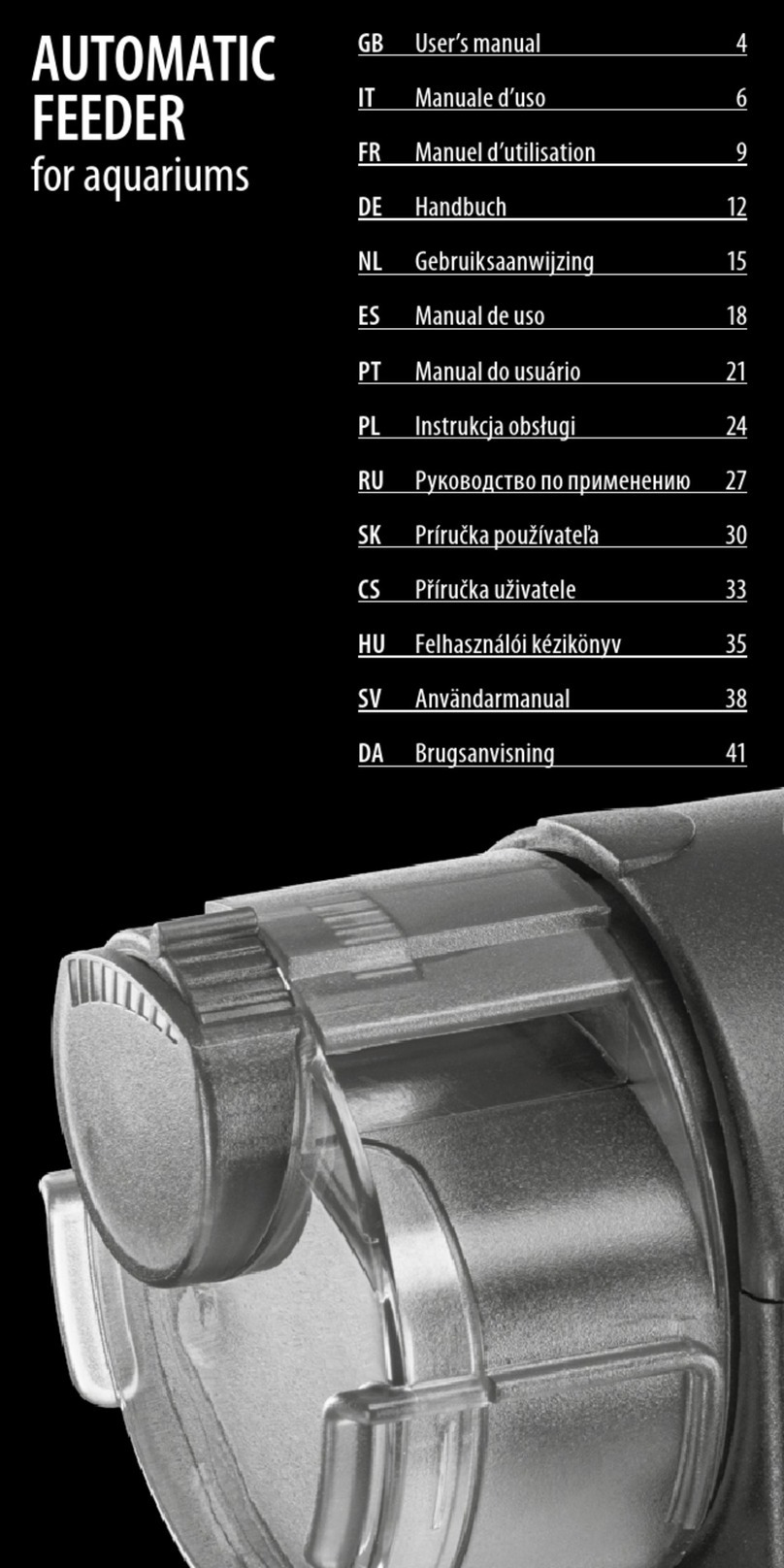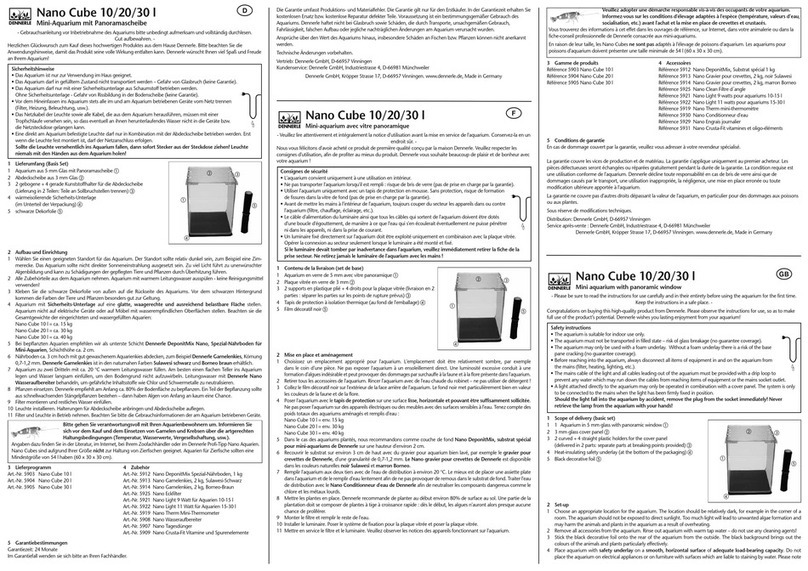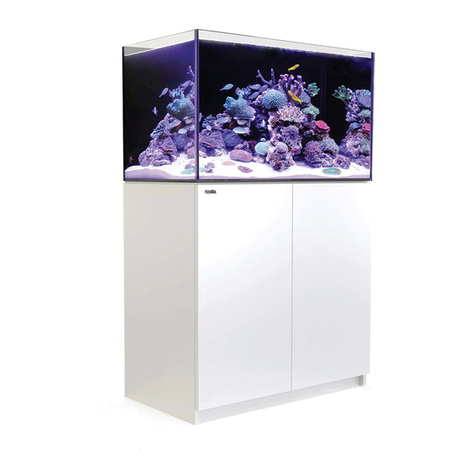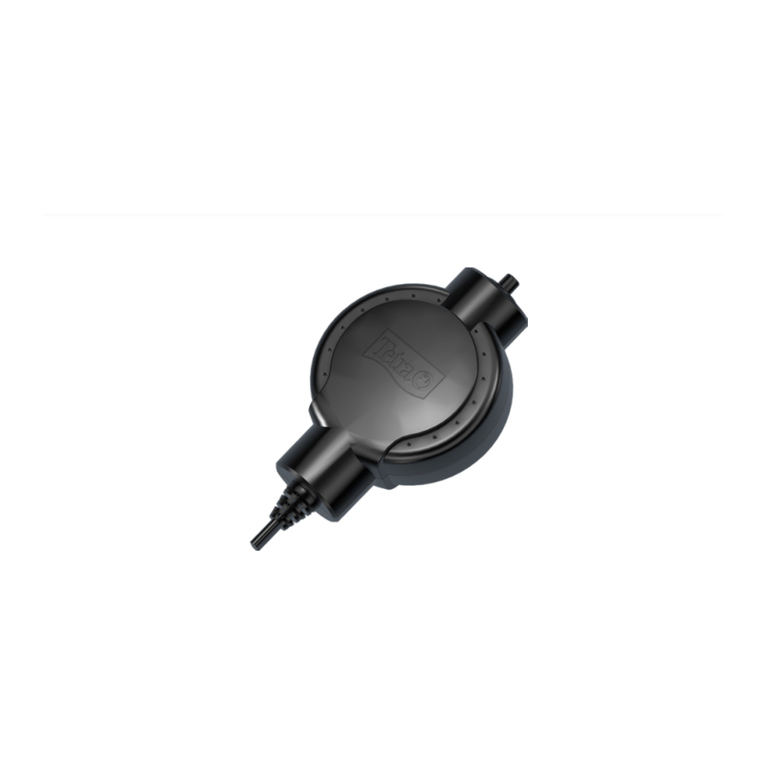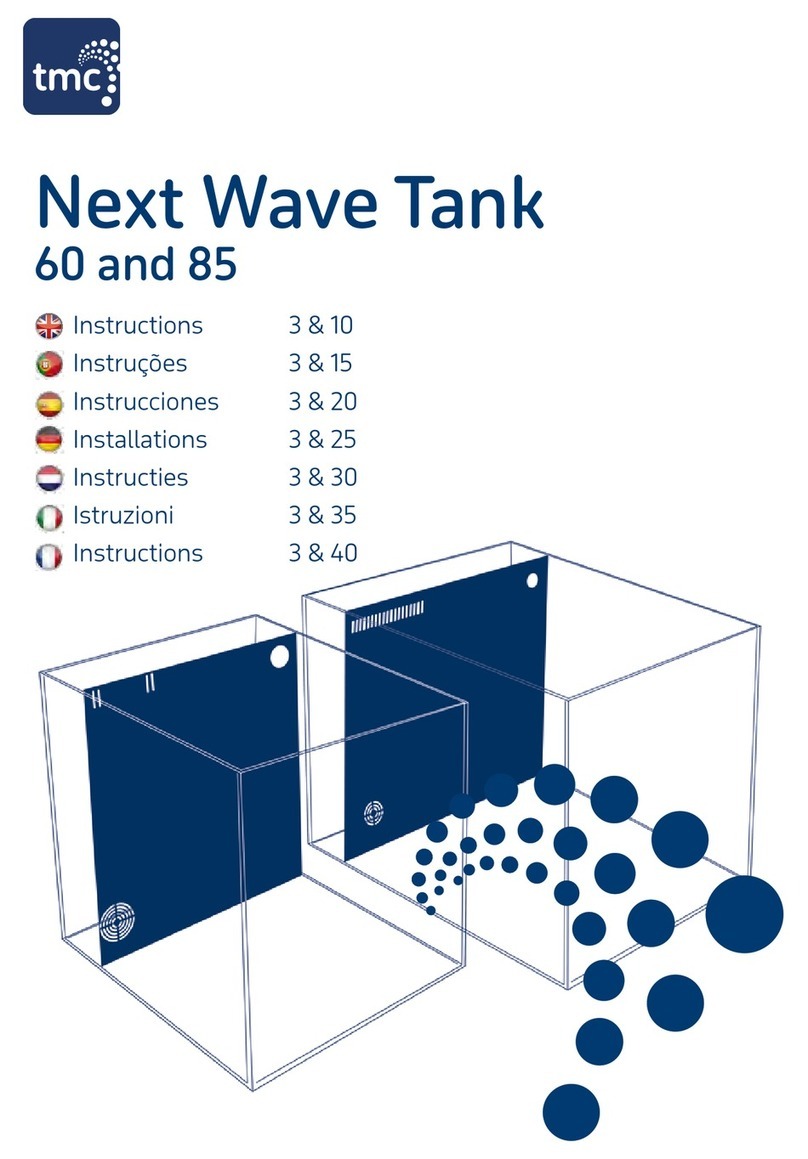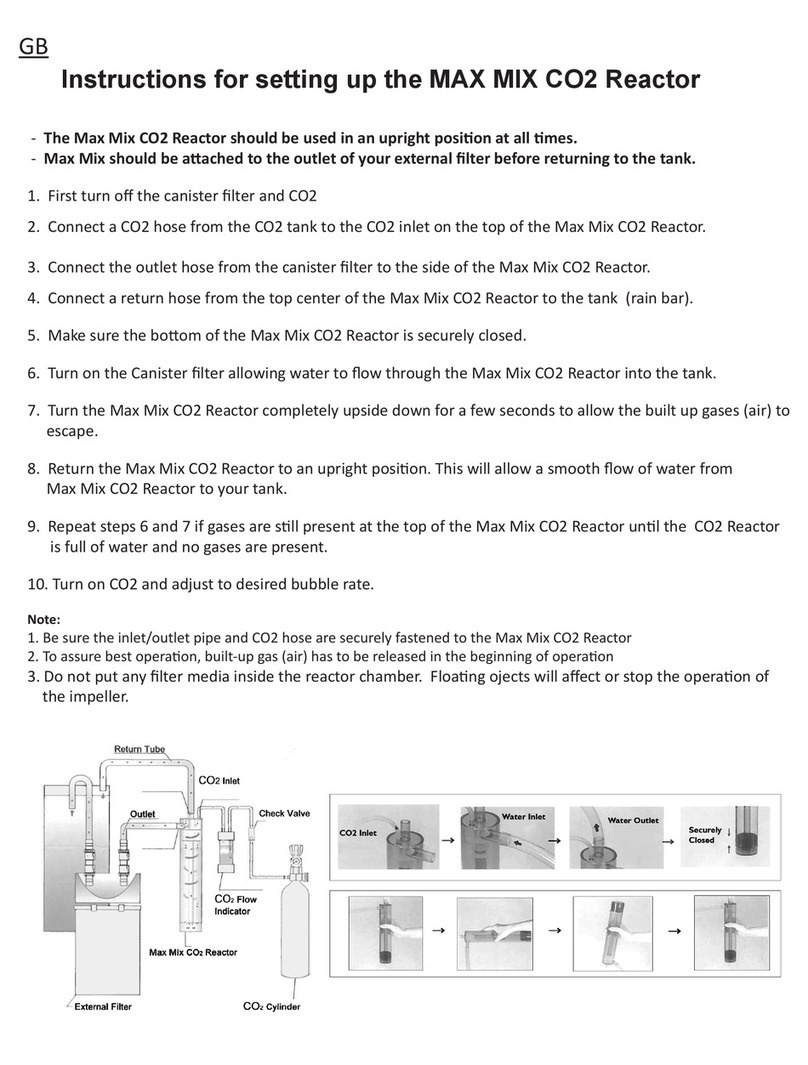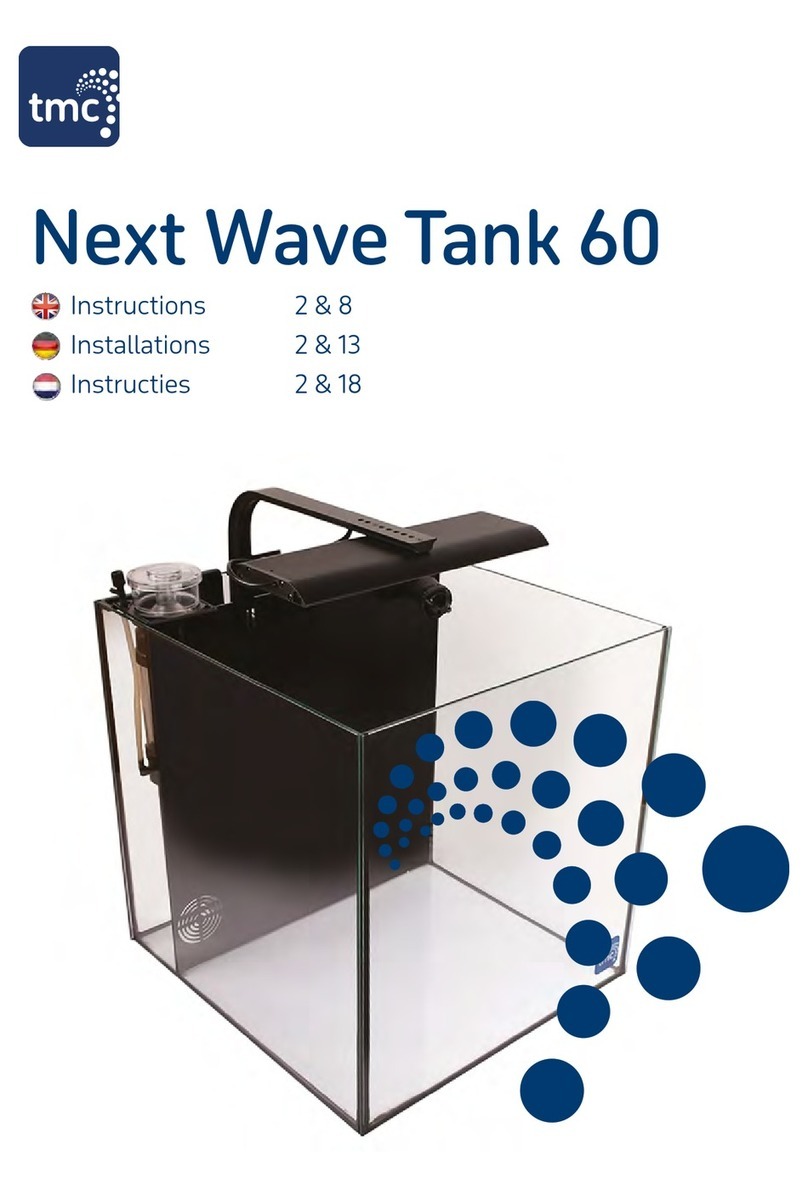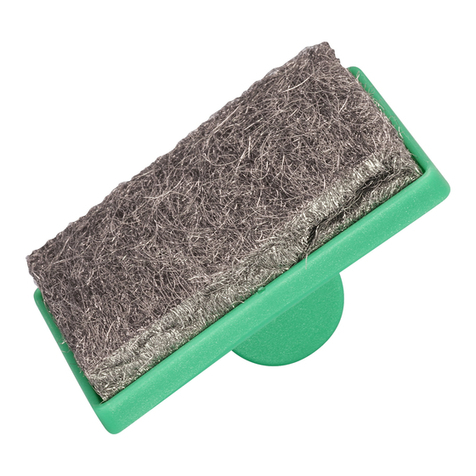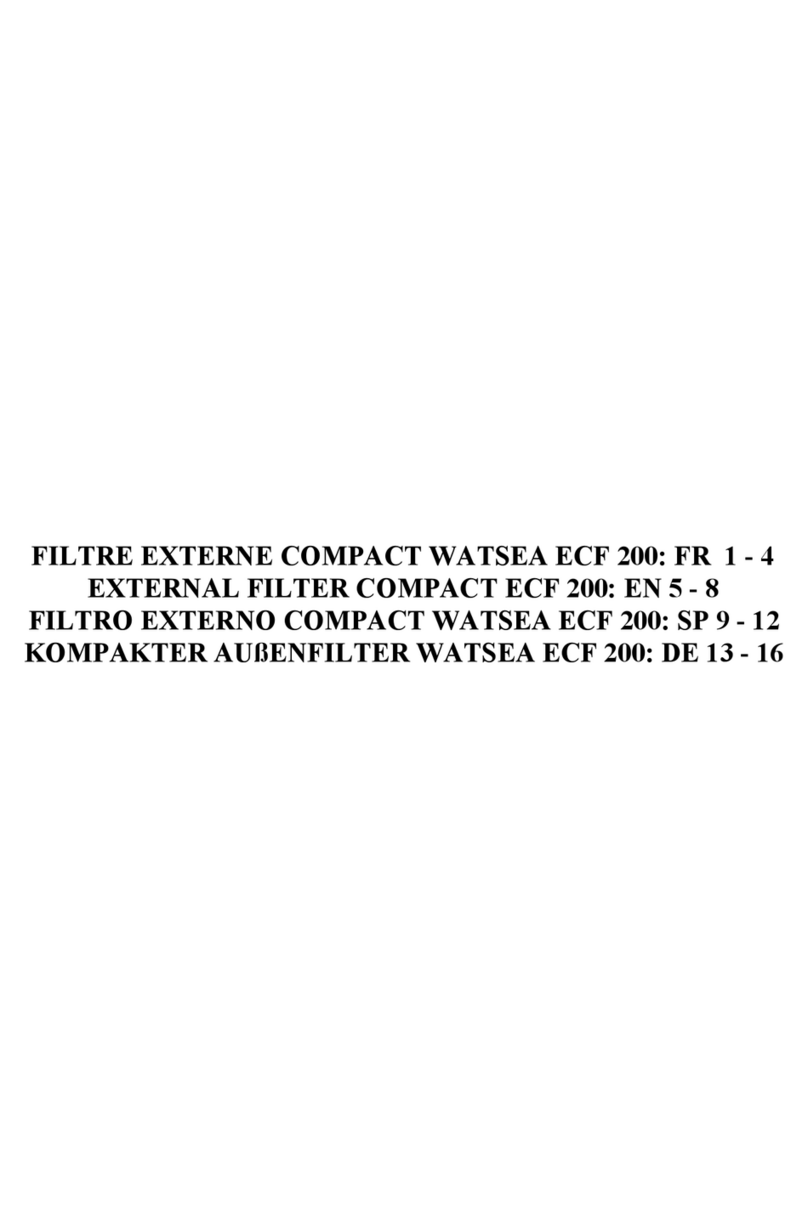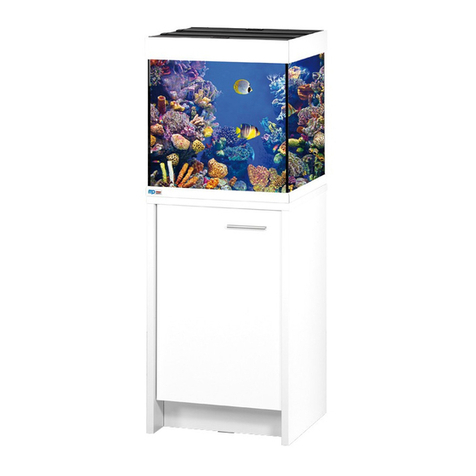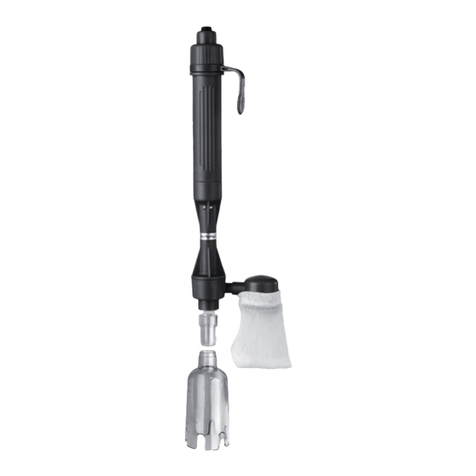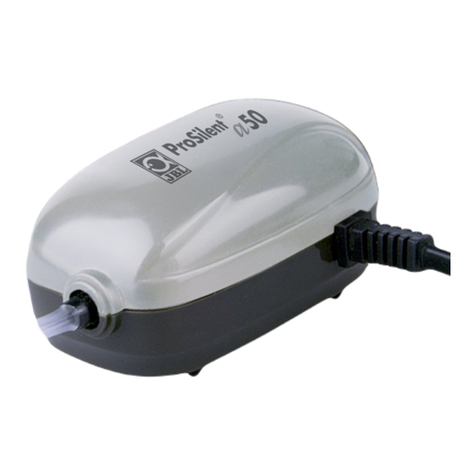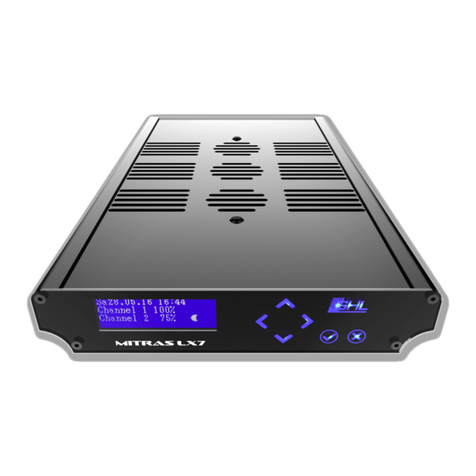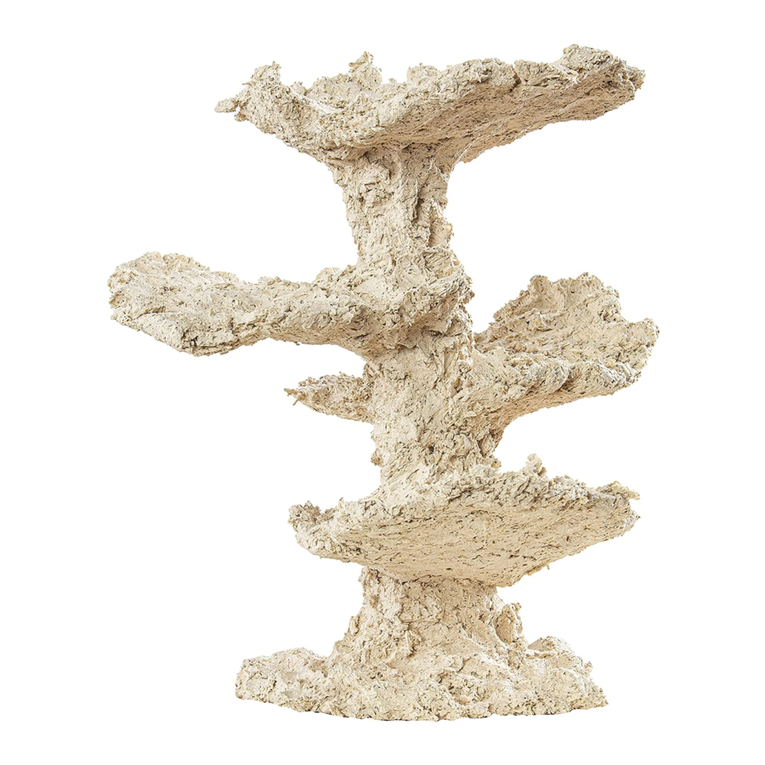
adjustable bae into position. Thread the plastic
screws through the open sections in the bae plates
and tighten the nut on the opposite side. The plates
can be fitted to either side of the glass dividers.
To adjust or level the plates, loosen the plastic screws
slightly to allow the plate to move, reposition the plate,
then retighten.
The plastic screws and nuts only need to be hand
tight, do not use tools as this may cause them to
become damaged.
Starting the aquarium and balancing the weir
When starting water circulation through the sump and
aquarium for the first time, adjustments will need to be
made to the valve on the main overflow pipe to ensure
quiet running.
Once the return pump has been installed in the sump,
fill the aquarium to the level of the bottom of the weir
comb and the sump to about ¾ full.
Make sure that the valve on the main overflow pipe is
fully open and that the outlet nozzle(s) are just under
the surface of the water and angled slightly downwards.
Turn on the return pump so that water starts pumping
from the sump into the main aquarium. The water level
in the aquarium will rise and start to flow over into the
weir box, this will then fill the weir to the level of the
main overflow pipe before water starts to flow back into
the first chamber of the sump.
As this is happens, the water level in the sump will fall.
If the return pump starts to draw in air, add more water
to the pump chamber. Only add enough water to keep
the pump suitably submerged, do not over fill.
At this stage, the overflow will be quite noisy, this is
normal. Once water is circulating around the system
and the water levels in the sump and main aquarium
are stable you can fine tune the valve on the main
overflow pipe to achieve quiet running. If you have a
flow controllable pump, set your pump to the desired
power level before continuing.
Close the valve slowly in small increments until you
start to see the water level inside the weirbox rise.
Allow time for this to stabilise. Keep gradually closing
the valve until the water reaches the top of the
emergency overflow pipe and just starts trickling into it.
These adjustments can take some time to perform, it is
sometimes best to make a minor adjustment and wait
a few minutes before making the next. If water starts
flowing down the emergency pipe too quickly then
open the valve slightly to allow more water down the
main overflow and reduce the water level in the weir.
As the weirbox is filling, the sump water level will drop
slightly, if needed add more water to cover the pump.
Please be aware that it is common to get a small
amount of noise from water running through the
pipework when new. As the tank matures, biofilms will
form that will dampen some noise. It is also possible
that minor adjustments will need to be made to the
valve over the first few days to achieve quiet running as
the tank and return pump stabilise.
Double check the pipework connections for any signs
of drips or leaking once the tank is running.
When the valve has been set, we recommend that
you simulate a power cut to check that the drain down
volume will not be too much for the sump to handle.
Simply unplug or turn o the return pump, the water
level in the aquarium will then drop to the level of the
nozzle outlet and the weirbox will drain down level with
the top of the main overflow pipe.
The sump should not fill to less than 40mm from the top
during this test. Once this is done turn the return pump
back on and allow the system to reset. As the tank and
weir refill, the tank will run noisily but will quieten again
as the weir refills and returns to its normal levels.
If the water level in the sump is getting towards the
point of overflowing and the main tank has not reached
its full drain down level, check that the return nozzle(s)
are not submerged too far under water, or that the anti
syphon hole on the 600 model is not blocked.
If the sump continues to fill then switch on the return
pump quickly to drop the level, remove some water
from the system and cary out the test again.
If you have had to remove water to prevent the sump
from overflowing, you will need to either lower the
height of the second blue sump bae or both baes
to reduce the amount of water in the system when
running.
The easiest way to determine the correct bae height
is, with the return pump still switched o, remove
enough water from the sump so that the water level
is at least 40mm down from the top edge. Turn on the
return pump and allow time for the the main aquarium
to fill and stabilise.
Do not adjust the main overflow valve as any
adjustments will have to be undone once the water
rises.
As the water level in the sump decreases, slowly adjust
the second bae or both baes downwards so as to to
keep the return pump submerged.
Once the main aquarium and weir are back up
to operating level and the return pump is suitably
submerged, the baes will be in the highest position
that they can be in for your aquarium to run safely
without overflowing when the return pump switches o.
Please note that as you add equipment into the sump,
the volume they take up can reduce the amount of drain
down space in the sump and so the blue baes may
need to be lowered further in some cases and/or some
water removed from the system.
The weirbox overflow will work at its quietest and
optimum performance when the water level is at the top
during normal operation, with only a slight trickle going
down the emergency overflow. This is a better method
than trying to perfectly adjust the valve to match the
return pump flow.
Top up reservoir
All models of Aqua-Pro Reef aquariums come complete
with a top up reservoir. The 600 / 900 / 1200 / 1500
models have this built into the main sump, the 1800
comes with a separate standalone reservoir that should
be positioned to the side of the main sump.
To automatically refill the sump from the reservoir, an
auto top up unit will need to be purchased separately,
such as the D-D H2Ocean Compact ATO.






